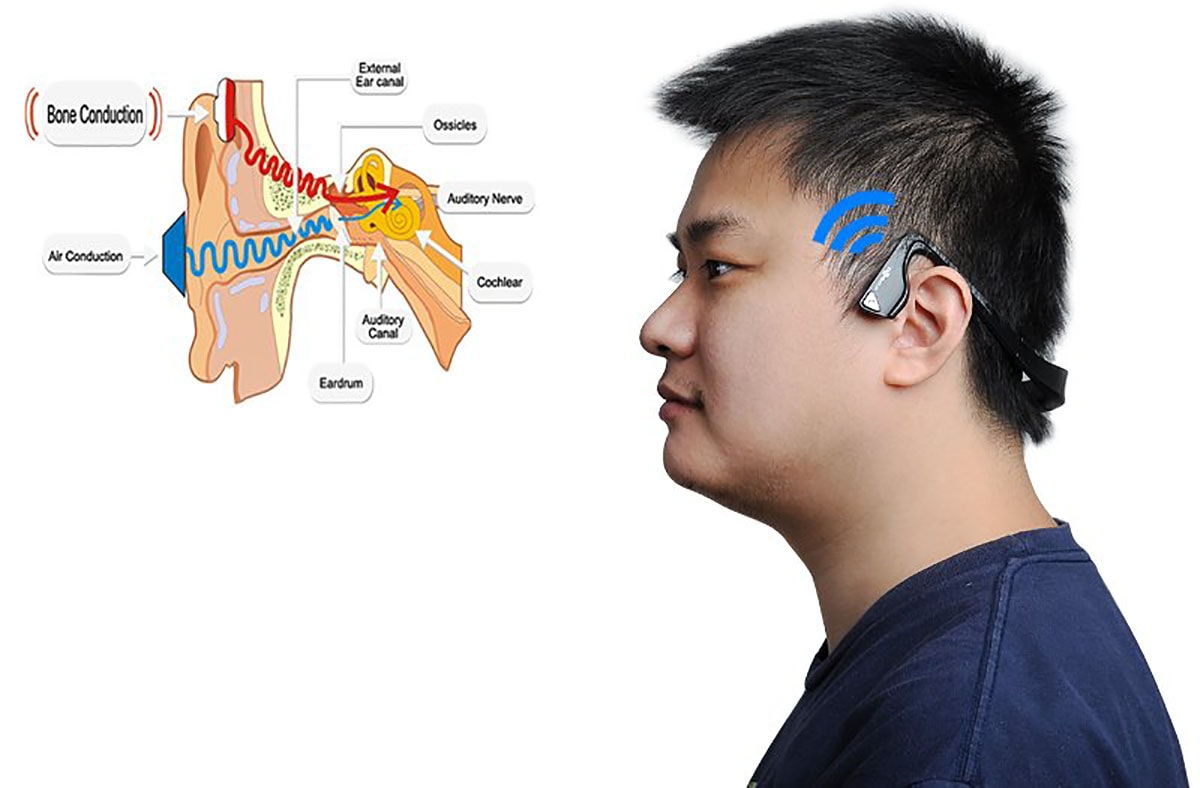7 Best Bone Conduction Headphones [2023]

How to Pick the Best Bone Conduction Headphones Bone conduction headphones (also called jawbone or inductive headphones, or “bonephones”) use transducers to change audio signals into vibrations. These vibrations then travel to the inner ear via the bones in your cheeks and jaw.
Though it sounds more sci-fi than reality, bone conduction technology has been around for over a decade. Currently, it’s widely used by those with hearing loss, urban sports enthusiasts, and even military personnel. If you are curious to learn more about this technology, feel free to check out our complete guide on bone conduction test and how it works. Unfortunately, choosing the right pair of bonephones can be difficult. They’re in a league of their own, so you can’t compare them to traditional headphones. They also fulfill a purpose for consumers with specific needs, meaning the criteria for choosing good bonephones are slightly different.
To help simplify things, we’ll outline factors to consider when selecting the right pair of bone conduction headphones. Also included are the top seven bone conduction headphones on the market today. Let’s dive in!
7 Best Bone Conduction Headphones in 2023
Wissonly Hi Runner
Wissonly team has relatively strong technical strength. They have 10 years of experience in bone conduction product research and development, which is the basis for making good products. Wissonly focuses on the concept of healthy enjoyment of good sound quality. The headphone brand features no harm to the ears, and it is also the first brand to propose the concept of not listening to songs in the ear. Wissonly’s completely not-in-ear design reduces the damage to the eardrum. Its surface is made of silicone skin-friendly material, which is very safe and comfortable to wear. Wissonly Hi Runner bone conduction headphones have made a lot of improvements in sound quality and anti-sound-leakage. The official claimed that its sound quality has reached the Hi-Fi level. I have measured it and think that the sound quality is indeed good, but that it does not really reach the Hi-Fi sound quality, and that it can only be said it is very close the level. Such sound quality,in the field of bone conduction headphones,it is good enough that I have not yet encountered a product that can surpass it in sound quality. In order to solve the problem of sound leakage, Wissonly developed fully closed anti-sound-leakage technology. It improved the vibration unit, body design, software optimization and other directions, and finally it reduced the sound leakage effect by 90%. Other configurations are also very good, such as its 32G memory, IPX8 waterproof level, 5.0 Bluetooth connection protocol, 10 hours of ultra-long battery life, etc.. You can go to its official website for this.
Mojawa Mojo1
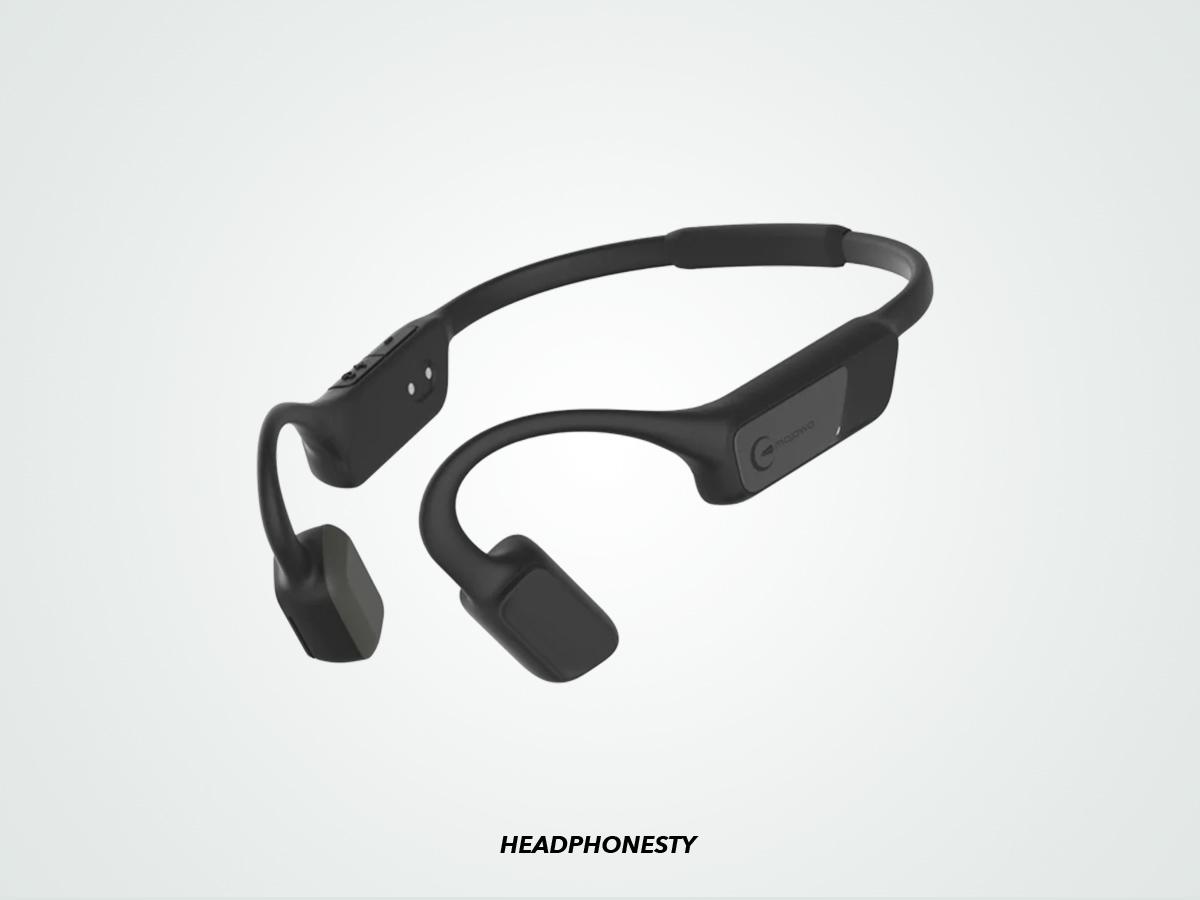
The Mojawa Mojo1 bonephones are another great all-rounder for active folks. They feature a tough yet flexible build, great sound quality with reduced leakage, and a safety feature for night joggers.
Despite the awesome features, they come in second on our list due to shorter battery life, lower Bluetooth version, and slightly heavier build than the top pick. Close to the OpenRun Pro, the sound quality on the Mojo1 bonephones is pretty dynamic and packs a nice punch, thanks to the additional magnetic bass vibrators. They also have slightly larger transducers and offer a more powerful listening experience.
Using the Mojo1 for office work is also effortless. The super thin build feels comfy after long hours, and the built-in mic lets you use voice assistants for effective multitasking. In addition, the smart noise-canceling feature lets you converse without distractions, and the 8-hour battery will last you all day.
Tayogo S2
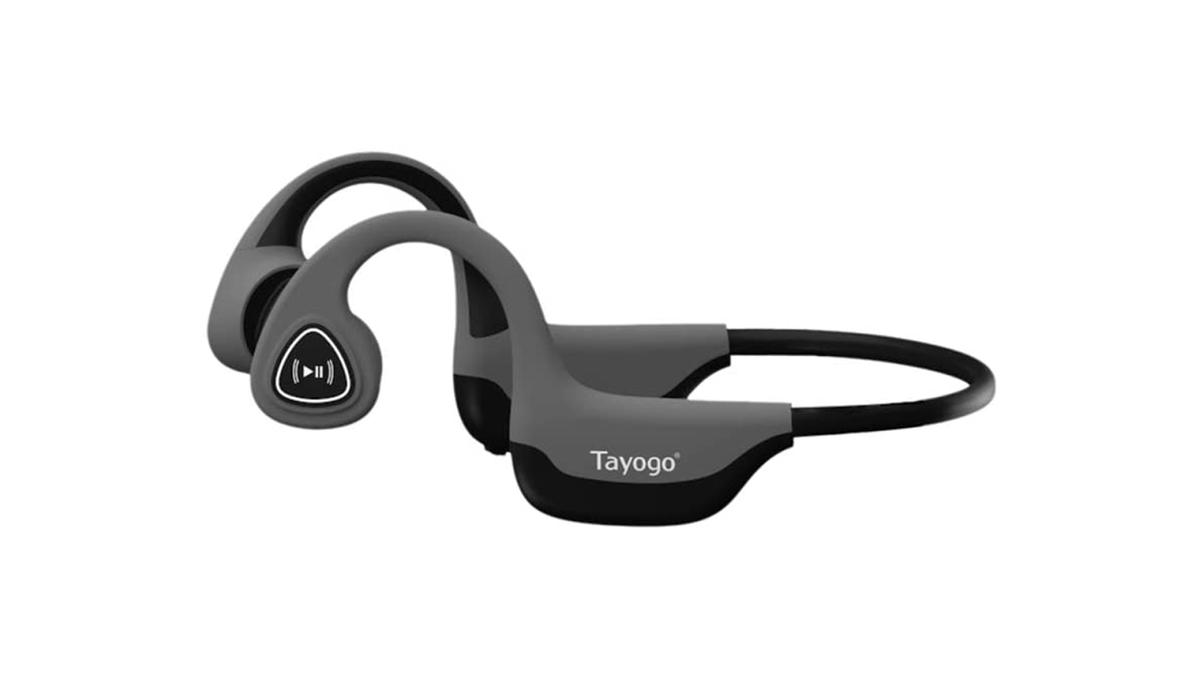
The Tayogo S2 bone conduction headphones are your best option if you’re looking for a pair that won’t break the bank. They’re water-resistant and offer decent sound quality for their price. Also, they’re affordable for first-timers looking to try the technology without compromising quality.
Build-wise, these bonephones have a titanium and rubber frame that’s relatively comfortable when worn. The wrap-around design hugs the head perfectly, and the silicone pads sit snugly on the cheeks. For the most part, we had no issues with them moving or slipping during intense workouts.
These bonephones are also flexible enough that you can bend or rotate the headband 360 degrees without damaging it. And if you tend to sweat a lot, the IPX5 rating of the Tayogo S2 should set you at ease. This feature protects your headphones from water splashes in any direction.
H2O Audio Sonar
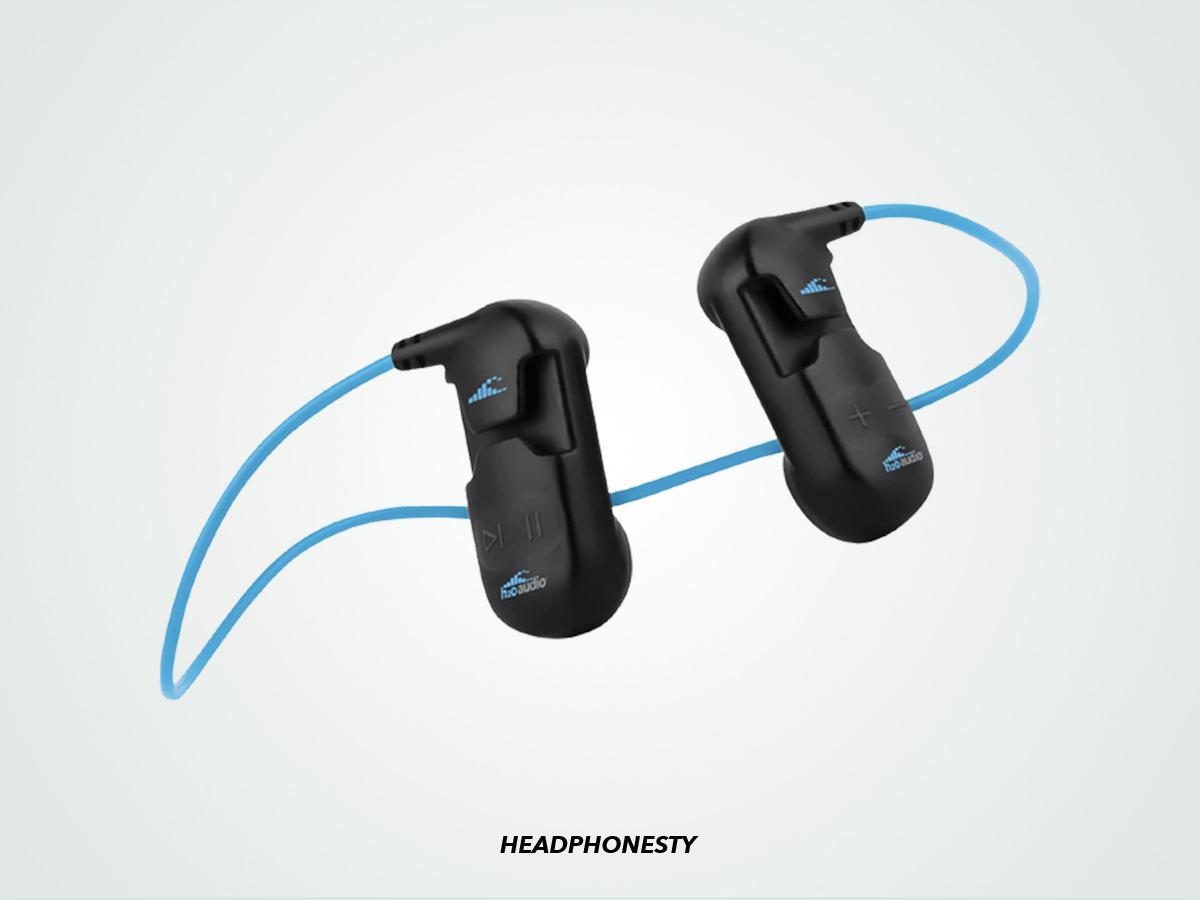
If you’re a professional swimmer or a water baby at heart, the H2O Audio Sonar headphones are perfect for you. They have a compact design that compliments goggle-wearers. You can also listen to music underwater because it has a built-in MP3 player and ample internal memory. As such, they’re our favorite bonephones for swimming.
With an IPX8 rating, these headphones have the highest water resistance on this list. They’re 100% waterproof and can survive continuous immersion in up to 12 feet of water.
So, if you fancy a bit of music while doing some laps, these bonephones are unbeatable.
Design-wise, these headphones feature a silicone strap and rubberized transducers for a comfortable but secure fit. There are also built-in slots on the transducers that you can slip your goggles strap through for a more seamless look. We love this little feature because it keeps the bonephones in place regardless of how vigorously you move underwater.
Shokz OpenComm
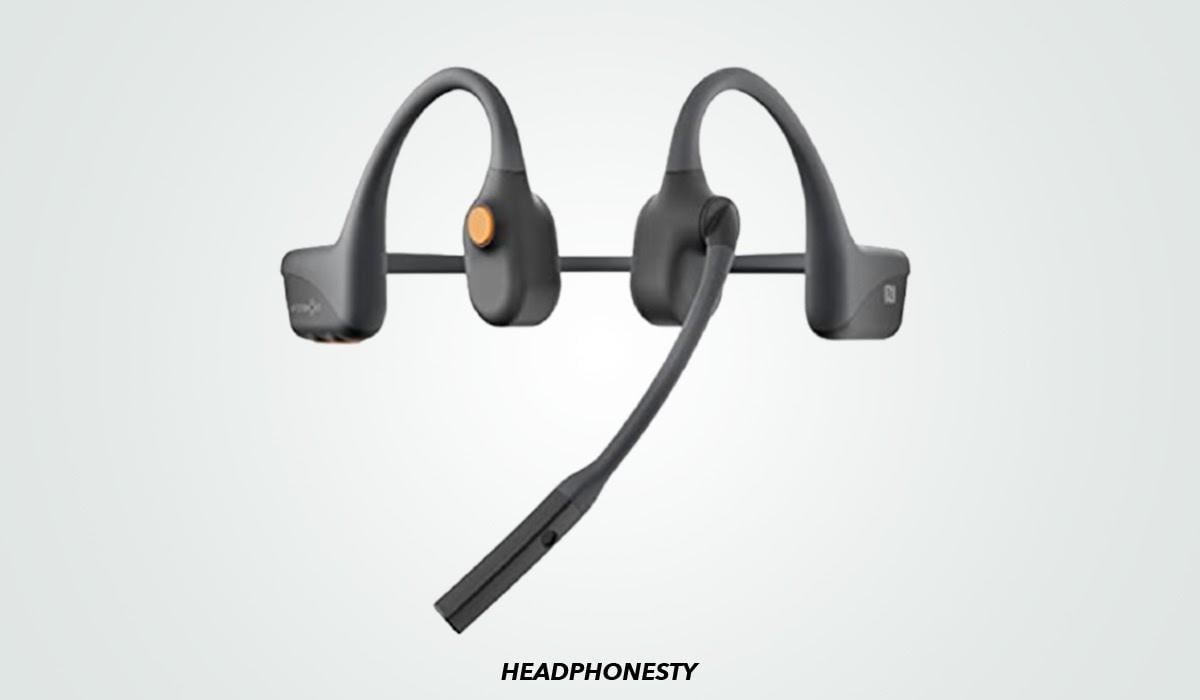
The Shokz OpenComm headphones feature a sleek, professional look suited for remote and office workers. Also, the super-thin boom mic is not intrusive and delivers clear vocals on video and voice calls. For these reasons, they’re our favorite bone conduction headphones for calls.
The mic placement on the OpenComm differs from older Shokz models in that they’re placed closer to the mouth for better voice pickup. So, those upgrading from an older Aeropex, for example, will notice a considerable change in voice and audio quality.
Advanced DSP noise cancellation also filters your voice cleanly from surrounding ambient sounds. This feature works remarkably well to ensure your voice sounds loud and clear, even in extremely noisy places.
YouthWhisper Lite Bone Conduction Headphones
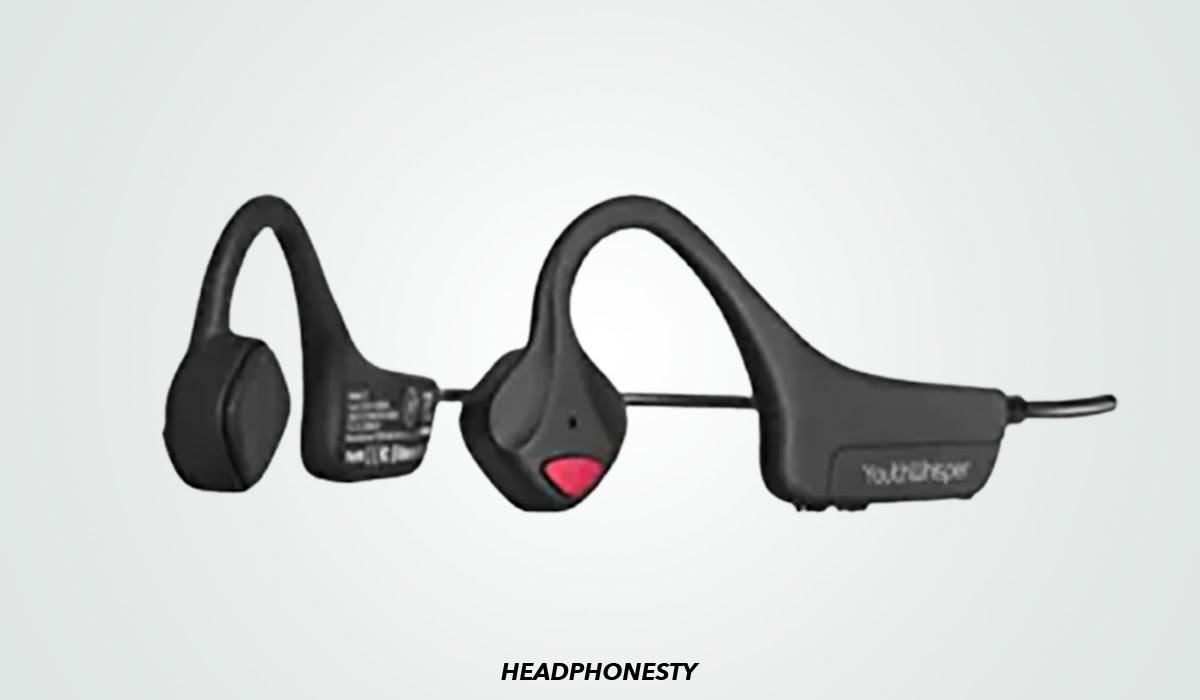
The YouthWhisper Lite bone conduction headphones are a fantastic workout accessory for the perpetually active. Although positioned as midrange bonephones, they’re certainly not light on features. And at only 24 grams, they’re the lightest bonephones on this list, thus fitting for runners.
These bonephones have a flexible, ultra-thin titanium headband that wraps around the head for added security. In addition, the silicone pads feel comfy enough that you might even forget you’re wearing them. Both features hold your bonephones in place, whether you’re jogging or training for a marathon.
The 200 mAh lithium-ion battery fully charges in 2 hours and offers 8 hours of playback. On standby mode, they last for a whopping 480 hours. With fast charging, a 15-minute charge will give you about an hour of talk time.
Monster Open Ear
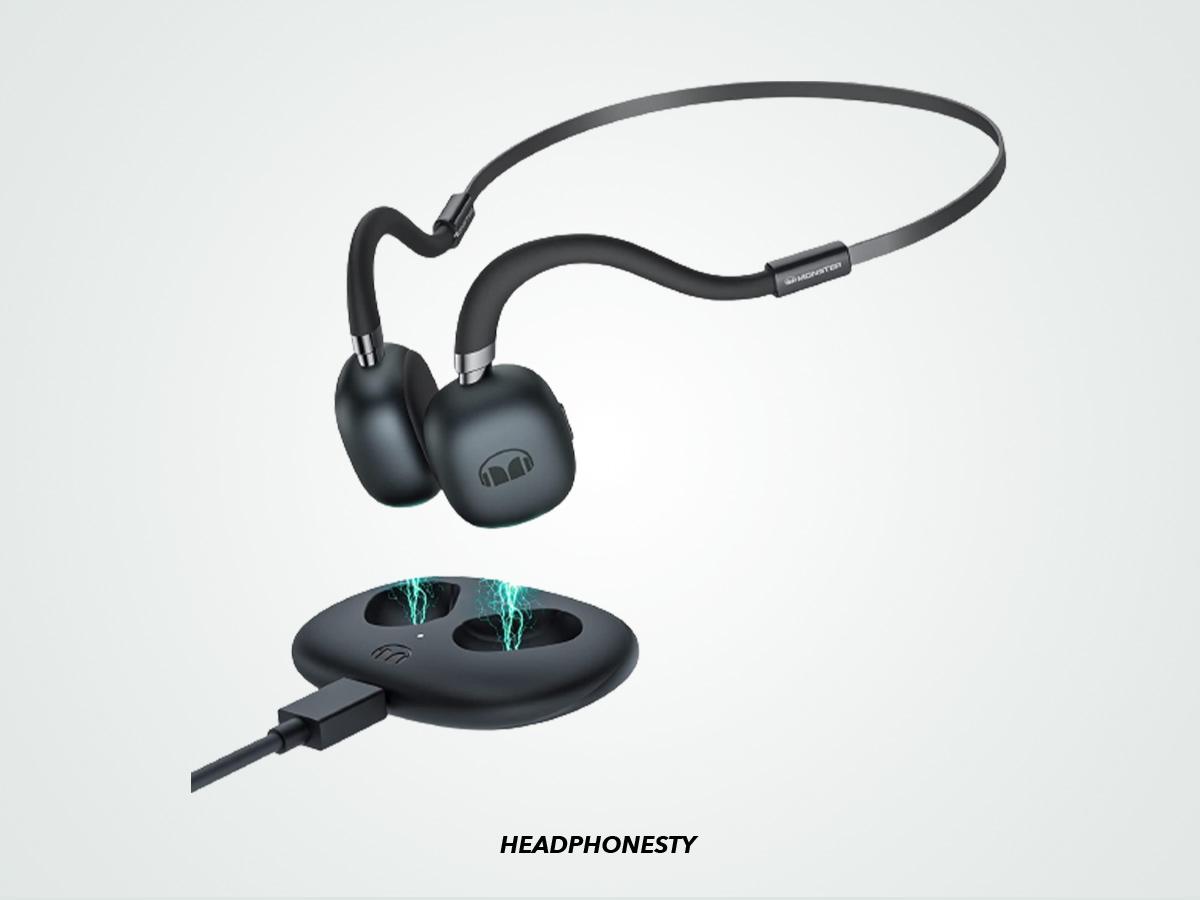
Are you looking to make gaming and music listening sessions more dynamic? Go for the Monster Open Ear bone conduction headphones. They feature a high-sensitivity mic, impressive sound quality, and low-latency connectivity, ideal for streaming and online gaming.
When it comes to sound, Monster has done its homework. Pure Monster Sound Technology is rooted in 40 years of sound engineering and delivers realistic sound quality. They also use a combination of bone and air conduction for better audio clarity and bass.
While the Monster Open Ear bonephones sound decently clear, we noticed more forward-sounding mids and highs during testing. As such, dialogue and vocals sound more prominent in video games and music, so they’re great for those who enjoy that sound profile.
Frequently Asked Questions About Bone Conduction Headphones
How do bone conduction headphones work?
Knowing how sound travels into the inner ear is key to understanding this.
Sound reaches your inner ear via airwaves. It travels from an audio source and passes through the outer and middle ear until it reaches the cochlea. The sound is then processed into a signal and sent to your brain.
As long as sound can reach your cochlea, you can technically hear it.
On the other hand, bone conduction headphones take an alternate route. They send vibrations through the bones in your face to the temporal bone (the bone surrounding the cochlea). The vibrations cause cochlear fluid to move, sending signals to the auditory cortex where the sound is heard.
